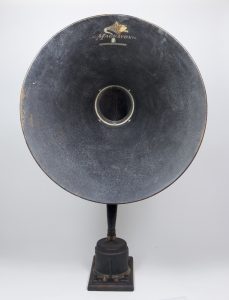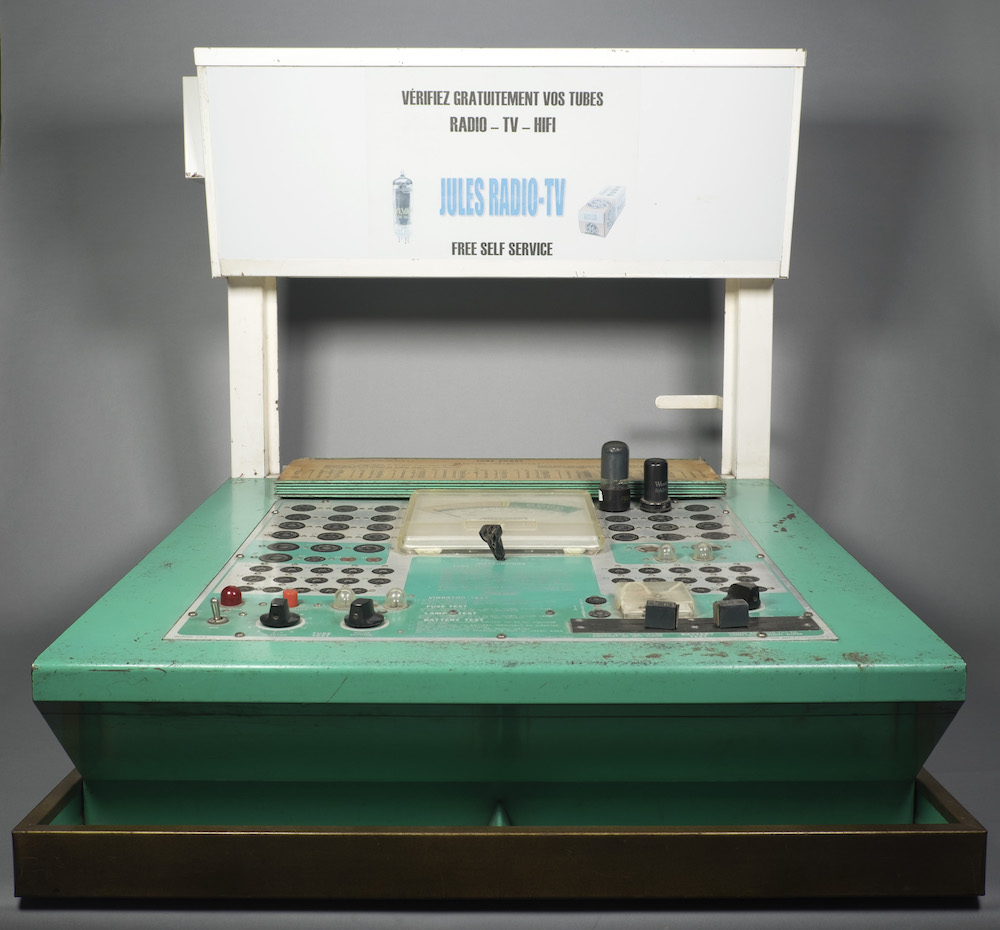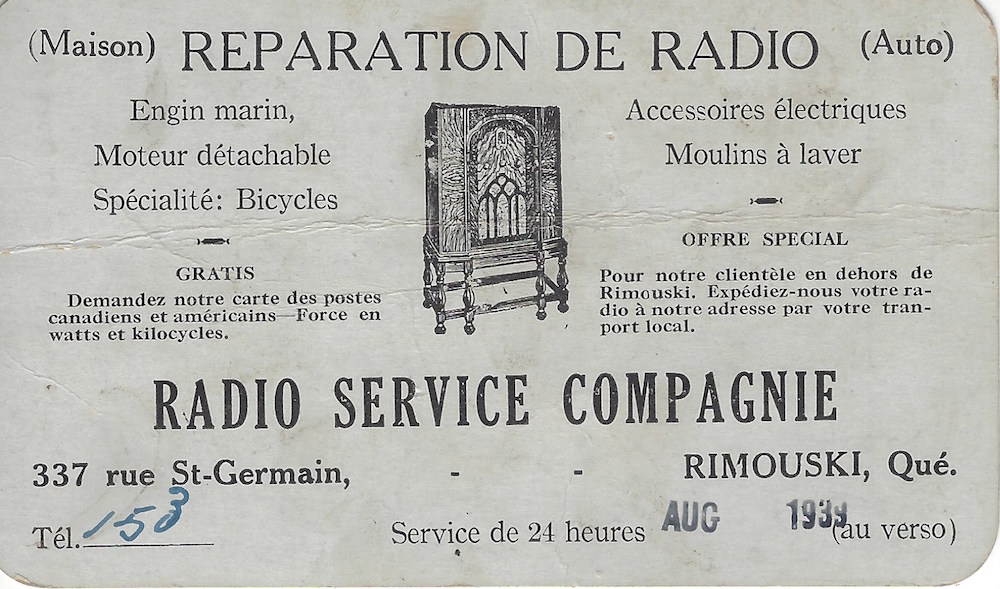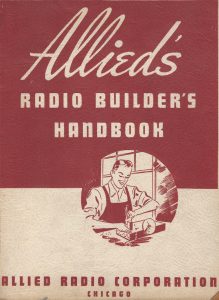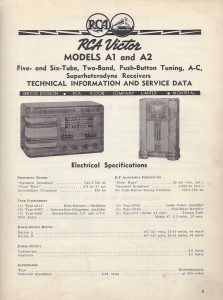Radio’s Bits and Pieces
Crystal sets had limited range and volume because radio signals alone powered them. At first, radio fans could only hear radio through earphones. Listeners would sometimes put a set of earphones in a bowl to amplify the sound, so more people could listen to the radio at the same time. Even as radio was maturing, receiving sets remained a collection of component parts. Besides the radio receiver, listeners needed batteries, tubes, and antenna wires.
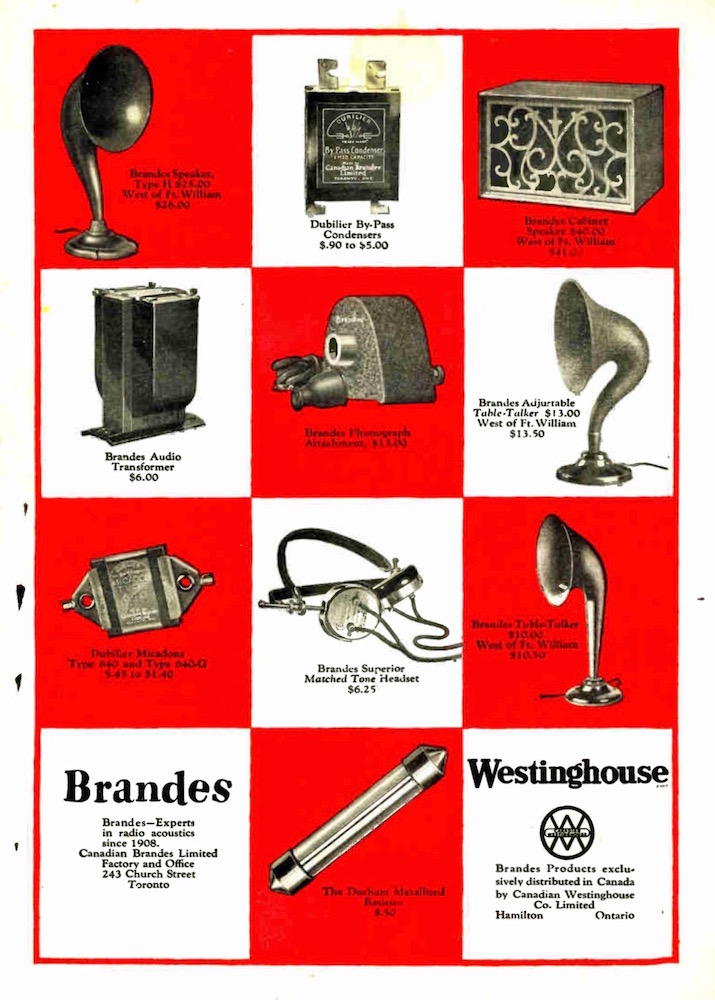
Brandes (Westinghouse) Advertisement, Radio News of Canada 4, no.5 (November 1925): pp 86. La Société Québécoise des Collectionneurs de Radios Anciens (SQCRA).
The use of vacuum tubes to amplify signals led to more powerful devices. Radio users could ‘listen in’ and hear voices and sounds from further away. Unfortunately, radio relied on batteries that often leaked. Radio assembly and listening were often confined to attics, barns, and garages.
Proper speakers could facilitate an increased signal strength to amplify sound. At first, radio borrowed speaker horns from gramophones. From 1927 on, electro-magnetic cone speakers reduced distortion through the amplification of sound. This made radio listening more enjoyable. Advancements were also made in vacuum tube technology. Canadian Edward S. Rogers produced battery-less radios after contributing in the development of a tube that modified the alternating current from the electrical grid into direct current used by radios. Rogers radios broadcast with less disturbing humming than older radio technology. Electricity in the home was supplied only through light. This meant that listeners had to plug their radio into a light socket, as seen in the ad below. Rogers marketed his “battery-less” radios in 1925. Good sounding radio receivers found their place in well-designed, wooden cabinets. The radio became a handsome, modern appliance. Families listened together to radio programs at home in the parlour!
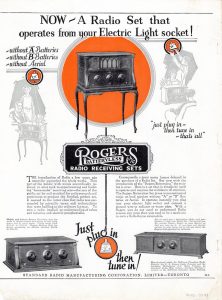
“Rogers Batteryless Radio Receiving Sets,” Canadian Homes and Gardens (November 1925), Toronto, Ontario. Musée des ondes Emile Berliner.
Tube radios were expensive and prestigious items in the households. Like cars and other new appliances, they needed maintenance. First, owners had to check batteries frequently to replace them as required. They also replaced damaged or burnt-out vacuum tubes. People could visit the local pharmacy to test their equipment. The Mercury tube tester, seen below, shows the technology used to test the radio tubes to keep radios running.
The radio was a new electronic technology in the home. Listeners relied on the guidance of knowledgeable experts. Companies like the Radio Service Company in Rimouski advertised radio servicing. They also repaired mechanical components of bicycles, motors, and other electrical appliances. To maintain radios, the industry printed service manuals for individual models. A host of booklets and magazines were also published to assist in the maintenance of radios. Newspapers, too, published columns on radio repair from their experts.


